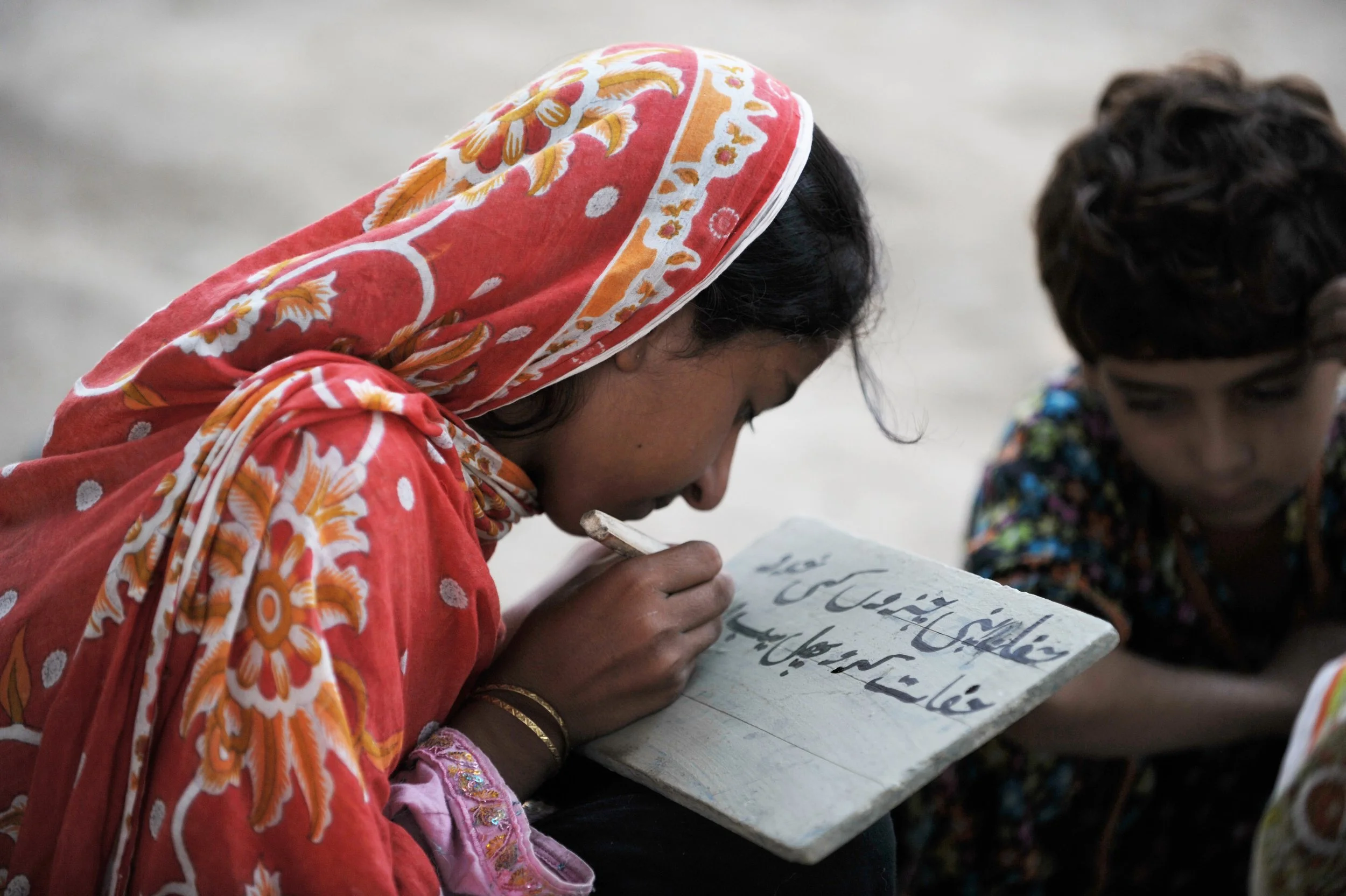TARGETED INSTRUCTION
Personalized learning and education technology are reshaping classrooms worldwide, offering new tools to close learning gaps, especially after COVID-19. LEAPS research tests various models of edtech supported targeted instruction, studying how these approaches empower students, support teachers, and empower parents in Pakistan’s public schools. Explore our research below.
Free to Choose: Targeted Instruction Pakistan (TIP) in Khyber Pakhtunkhwa
Authors: Tahir Andrabi, Juan Baron, Isabel Macdonald, Zainab Qureshi
Citation: Andrabi, Tahir, Juan Baron, Isabel Macdonald, and Zainab Qureshi. 2025. “Free to Choose: Introducing Technology for Foundational Learning in Pakistan.” Working Paper.
Questions and Preliminary Findings
Does grouping primary students by learning level instead of age/grade improve learning outcomes in Khyber Pakhtunkhwa, Pakistan? How do different implementation methods (paper-based, mandated tech-supported, or optionally tech-supported ) affect achievement?
TIP Improved Learning: The 8-week long program, which included sorting students across classrooms by ability level, increased student learning by 0.12 SD in math, English, and Urdu.
Greatest Gains when Tech is Optional: Learning gains were highest when teachers could opt into using the technology tool or not (0.15 SD), followed by paper-only (0.11 SD) and mandated tech tool (0.09 SD).
Choice Especially Beneficial for Women: For women teachers, optional tech tool use led to a 0.13 SD gain versus 0.01 SD with mandated use. For men, there was no difference across mandated vs. optional.
Optional Treatment Reached Low Performers The tech optional treatment benefited the entire ability spectrum, especially low-performing girls. About 65% of teachers opted in to using the tool.
Why This Matters
In many developing countries, education systems struggle to deliver effective learning for all children due to rigid classroom structures and one-size-fits-all policies. This study confirms that sorting students by ability and adapting instruction to students’ actual learning needs can improve learning in the Pakistani context. However, it adds an important nuance about the use of new technologies such as a smartphone app designed to support program delivery.
Effects were highest when teachers had the flexibility to use supportive technology if/as they wanted, suggesting that empowering teachers rather than imposing uniform mandates can better close the persistent learning gaps that hold back progress.
This study also found the complexities of across-classroom sorting to be logistically challenging and unlikely to be suitable for scale, pointing to the need to re-design programs to effectively target learning within students’ usual classrooms.
Resources vs. Information: Targeted Instruction Pakistan (TIP) in Islamabad
Authors: Christina Brown, Tahir Andrabi, Asim I. Khwaja, Isabel MacDonald
Citation: Forthcoming
Questions and Preliminary Findings
How can we support teachers to target instruction within highly varied classrooms, without across-classroom sorting? Can solving information and/or resource constraints help teachers, and what role can edtech play?
TIP Improved Learning: The 8-week TIP program, which here did not include sorting (unlike in Khyber Pakhtunkhwa), resulted in a positive average effect of 0.13 SDs, equivalent to about 2 months of additional learning compared to the control group.
Paper Was As Effective as EdTech: Providing teachers with printed materials — workbooks that included learning activities from multiple grade levels — was just as effective as the more complex treatment arms that involved edtech, including providing information about student gaps or detailed guidance on which activities to give which student.
Teacher Characteristics Matter: Some types of teachers performed better with additional information and/or additional guidance, while others performed best with just printed workbooks alone.
Why This Matters
Targeted instruction programs, as the LEAPS study in KP, have shown that across-classroom sorting, while effective at improving student learning, is very cumbersome and difficult to scale.
This study demonstrates how we can support teachers target instructions in their regular classrooms by improving the materials they have access to.
Understanding that one of the biggest barrier may be materials offers a practical, scalable path for policymakers and schools to address learning gaps. Similarly, acknowledging that additional tools such as edtech may not be the best solution in all contexts is important, especially when edtech, AI, and other similar tools are often viewed as a “silver bullet”.
Empowering Parents: Parental Participation in TIP
Authors: Gabrielle Vasey, Isabel H. Macdonald, Unzila Nadeem
Citation: Forthcoming
Questions
Can we empower parents to better support learning at home, as part of the Targeted Instruction Pakistan (TIP) program?
How do parent-targeted messages about student learning levels affect parental beliefs, behaviors, and student learning outcomes?
What impact do these messages have on the broader learning ecosystem, including decisions about supplementary support like tutoring?
Do parents change their behavior in response to messaging interventions?
What spillover effects do parent-focused interventions have on other members of the learning ecosystem, such as family and educators?
Why This Matters
Strengthening children’s educational outcomes requires leveraging all available support networks, yet many families face persistent barriers to engagement. Parent-focused messaging interventions offer a promising and affordable pathway for reaching caregivers directly, with the potential to catalyze broader shifts in home and school environments.
Similarly, it is important to understand the effects of targeted instruction programs on parental behavior. It’s possible that parental efforts are complementary to teacher effort, reinforcing the positive benefits of TI interventions. However, it’s also possible parents substitute effort away from students who receive better schooling, muting the overall impacts of in-school interventions such as TI.

